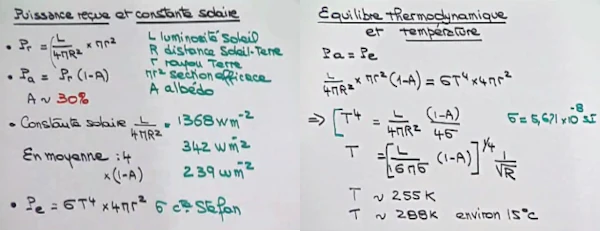
Image description: The electromagnetic spectrum encompasses all ranges of light. Maxwell demonstrated that light is an electromagnetic wave and that there is no reason to restrict its wavelength to the interval corresponding to the visible spectrum. In reality, the entire electromagnetic spectrum is made up of light.
Sunlight warms the Earth. This energy comes from electromagnetic waves and particularly from photons that strike the surface of our planet. Visible light is part of a small range of electromagnetic vibrations found in the electromagnetic spectrum.
The Earth's atmosphere only allows a tiny portion of this radiation to pass through. Short waves are absorbed in the atmospheric layers, and long waves are reflected. Most of the waves that reach us are those of visible light. The nature of light pertains to quantum mechanics, where it is both a wave and a particle (one can count the particles contained in the wave).
Light has a wavelength that determines its color. Red emits in the wavelength range of 620 to 780 nanometers, Orange from 592 to 620 nm, Yellow from 578 to 592 nm, Green from 500 to 578 nm, Blue from 446 to 600 nm, and Violet from 380 to 446 nm. The different windows of the electromagnetic spectrum are characterized by a wavelength but also by a defined frequency range.
Frequency is the number of electromagnetic oscillations that pass through a given point in one second. It is expressed in the unit of frequency, which is the hertz. The shorter the wavelength, the higher the frequency. When we receive the sun's light rays on our skin, we realize that photons carry energy.
But how much energy does a photon carry?
It all depends on the photon, or rather, it all depends on the wavelength of the photon. The shorter the wavelength of the photon, the more energetic it is. The formula E = hf is used to calculate the energy of a photon.
The energy of a photon is therefore infinitely small.
It depends on the frequency, and thus the color. The frequency of red is 350 THz, and that of blue is 750 THz. The formula E = hf gives the energy of a photon.
Energy of a blue photon: E = (6.62x10-34)x(750x1012) ≈ 10-18 joules. 1 joule ≈ 1018 blue photons.
A calorie is the amount of energy needed to raise the temperature of one gram of liquid water from 14.5 to 15.5 °C. This corresponds to 4.1855 joules. To raise the temperature of 10 cm3 of coffee by 50 °C, approximately 100x50x1018, or 5x1021 joules and about 1021 blue photons and 1022 red photons are needed. The shorter the wavelength, the greater the energy of the radiation.
N.B.:
1 kJ is approximately 239 calories. 1 Ws (Watt second) = 1 joule. 1 kWh (kilowatt hour) = 3,600,000 Joules.

The current average temperature of the Earth is related to the average solar power received on Earth and the Earth-Sun distance.
The calculation of the power received on Earth in watts per square meter is given by Pr = L/4ΠR2 x Πr2, and the calculation of the power absorbed by the Earth is given by Pa = Pr (1-A).
The Earth is in thermodynamic equilibrium, meaning that the absorbed power equals the re-emitted power. The calculation of the Earth's average temperature gives 255 K, but the greenhouse effect produced by the presence of water vapor and carbon dioxide in the Earth's atmosphere increases the temperature by 33 K, making it 288 K, or approximately 15°C.